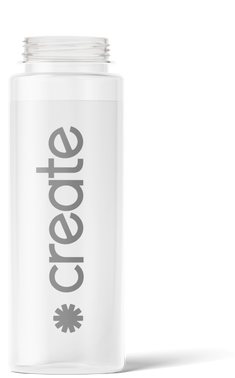Maximize Your Creatine Intake: What is The Optimal Daily Dosage?
Creatine supplements are extremely popular among athletes. This supplement can help improve lean muscle mass, strength, and power. Additionally, it also has potential anti-aging benefits as well as possible positive impacts on brain health.
So, how much creatine per day should you take to get these benefits? Recommended doses range depending on how much you weigh and the specific type of creatine supplement. It is important to note that your body has the ability to store creatine, so supplementing too much can lead to wasted supplements.
Get to know the best dosage and ways of taking Creatine, and amaze yourself with the tastiest and best quality Create creatine monohydrate gummies!
Creatine: The Secret to Improved Athletic Performance
Creatine is naturally produced amino acids in the body and is found in foods such as red meat, fish, and poultry. It's also available as an over-the-counter supplement in powder form. The recommended daily dosage of Creatine varies depending on your goals. If you want to increase strength or power, a daily dose of 3-5 grams is usually recommended. If you want to gain mass, a daily dose of 5-10 grams is typically advised.
In general, starting with the lower recommended dosage is best, and increasing your intake as needed. This will help you find the right amount for your individual needs.
Factors that can Affect an Individual's Optimal Creatine Dosage
Several factors can affect an individual's optimal dosage of taking creatine supplements, including:
Age
The optimal dosage of Creatine may vary depending on an individual's age. Some research suggests that younger individuals may be more responsive to creatine supplementation and may require a higher dosage to see the full benefits. According to WebMD, older adults should take higher doses but for a shorter time for safety. For instance, taking 20 grams of Creatine for seven days will be safe.
Weight
The dosage of Creatine may also be affected by an individual's weight. Individuals who weigh more may require a higher dosage of Creatine to see the same benefits as someone who weighs less.
Activity Level
The optimal dosage of Creatine may also depend on an individual's activity level. Highly active individuals, such as athletes, may require a higher dosage of Creatine compared to sedentary individuals.
Health Conditions
Certain health conditions, such as kidney disease, may affect an individual's ability to process and eliminate Creatine from the body. In these cases, it is important to consult a healthcare expert to determine the appropriate dosage.
Recommended Daily Dosage Ranges for Different Groups
The recommended daily dosage of creatine can vary depending on an individual's specific needs and goals. In general, starting with a lower dosage is recommended and gradually increasing it as needed. The following are some general guidelines for creatine supplementation:
Healthy Adults
The most commonly recommended dosage of creatine for healthy adults is 3-5 grams per day. This dosage can be taken as one single dose or divided into smaller doses throughout the day. It is important to note that this suggested dosage is only a starting point and may need to be adjusted based on the individual's goals and needs.
For Athletes
Athletes may require a higher dosage of creatine, typically 5-10 grams per day. This can be taken as one single dose or divided into smaller doses throughout the day. It is important to note that this suggested dosage is only a starting point and may need to be adjusted based on the individual's goals and needs.
Vegetarians
Vegetarians may require a slightly higher dosage of creatine due to the fact that they consume fewer animal sources of protein, which are natural sources of creatine. As a result, their bodies may not be able to synthesize enough creatine on their own, making supplementation more important. A daily dosage of 5-7 grams is typically recommended for vegetarians.
Individuals with Kidney Disease
Creatine is eliminated from the body through the kidneys, and individuals with kidney disease may have reduced function in these organs. It is important for individuals with kidney disease to consult with a healthcare professional before taking creatine, as a higher dosage may put additional strain on the kidneys.
Maximize Creatine Benefits: A Guide To Proper Cycling
Creatine cycling refers to the practice of alternating periods of taking creatine with periods of not taking it. Some people choose to cycle creatine in order to maximize its effectiveness and minimize the risk of any potential side effects.
Here are some tips for properly cycling creatine:
Start with a Loading Phase
According to Healthline, during the loading phase, you can take a higher dosage of creatine (usually around 20 grams per day) for 5-7 days to quickly saturate your muscles with the supplement. This can maximize the benefits of creatine and may allow you to see results faster.
Follow a Maintenance Phase
After the creatine loading phase is complete, switching to a lower maintenance dosage of around 3-5 grams per day can help maintain the benefits of creatine without requiring such a high dosage. This maintenance dosage keeps the muscles saturated with creatine, helping ensure that each individual achieves their desired results. Additionally, cycling creatine helps minimize any potential side effects that may occur with prolonged use.
Take Breaks
After taking Creatine (usually around 4-6 weeks), you can take a break from the supplement for a few weeks to allow your body to "reset" and potentially increase the supplement's effectiveness when you start taking it again. This helps keep your body from becoming too used to the supplement and potentially reducing its effectiveness.
Potential Side Effects Of Taking Too Much Creatine And How To Avoid Them
Creatine is generally considered safe when taken in recommended dosages, but taking too much creatine can lead to a number of potential side effects. The most familiar side effects of taking too much creatine include the following:
Nausea and Stomach Discomfort
Taking large doses of creatine can lead to nausea and stomach discomfort, particularly if taken on an empty stomach. High levels of creatine in the body can also cause gastrointestinal distress, such as cramps, bloating, belching, and diarrhea. These symptoms can be exacerbated if the supplement is taken with other supplements or medications that have a similar effect on the body.
To avoid these side effects, it is important to follow the recommended dosage instructions on the supplement label and to take creatine with meals to help absorb it more efficiently. Additionally, drinking plenty of water throughout the day can help to reduce any potential stomach discomfort caused by taking too much creatine.
Weight Gain
Creatine can cause an increase in muscle growth, which may lead to weight gain. This is because creatine helps draw water into the muscles, which can cause the muscles to appear fuller and larger. Creatine also helps increase protein synthesis, which helps build muscle and further contributes to weight gain. Additionally, creatine can raise levels of IGF-1 and insulin, which can also lead to weight gain.
However, it is evident from the National Library of Medicine research that this side effect can be mitigated with the help of diet considerations. Ensure that your diet includes plenty of lean proteins and complex carbohydrates and contains an adequate amount of healthy fats. Additionally, regular exercise can help maintain a healthy body weight while still receiving the benefits of creatine.
Dehydration
Creatine can increase the body's water needs, leading to dehydration if sufficient water is not consumed. Those supplementing creatine must be mindful of their hydration levels, as the body requires extra fluids to support increased muscle cell activity. When taking creatine, it is important to drink plenty of fluids throughout the day to prevent dehydration, and if you are engaging in physical activity while supplementing with creatine, it is important to increase the fluid intake even further.
Muscle Cramping
Creatine can also lead to muscle cramping, particularly if insufficient water is consumed or the supplement is taken in large doses.
To help prevent muscle cramping and increase muscle mass, it is important to ensure you stay hydrated and take the supplement in recommended doses. Additionally, including electrolytes in your diet or adding them to your creatine supplementation can help reduce any potential cramping.
Experience The Power Of Creatine With Create Supplements!
Even though creatine is a widely available supplement, it's still important to be mindful of how much you take. The recommended daily dosage ranges for different groups help ensure that you're getting the right amount of creatine to help improve your performance and avoid any potential side effects. By following these guidelines and properly cycling your intake of creatine, you can maximize its effectiveness and enjoy all its benefits.
Looking for a comfortable way to get your creatine fix? Try Create Gummies! Our delicious gummies make it easy (and fun!) to get the right amount of xreatine daily. Check them out today!










